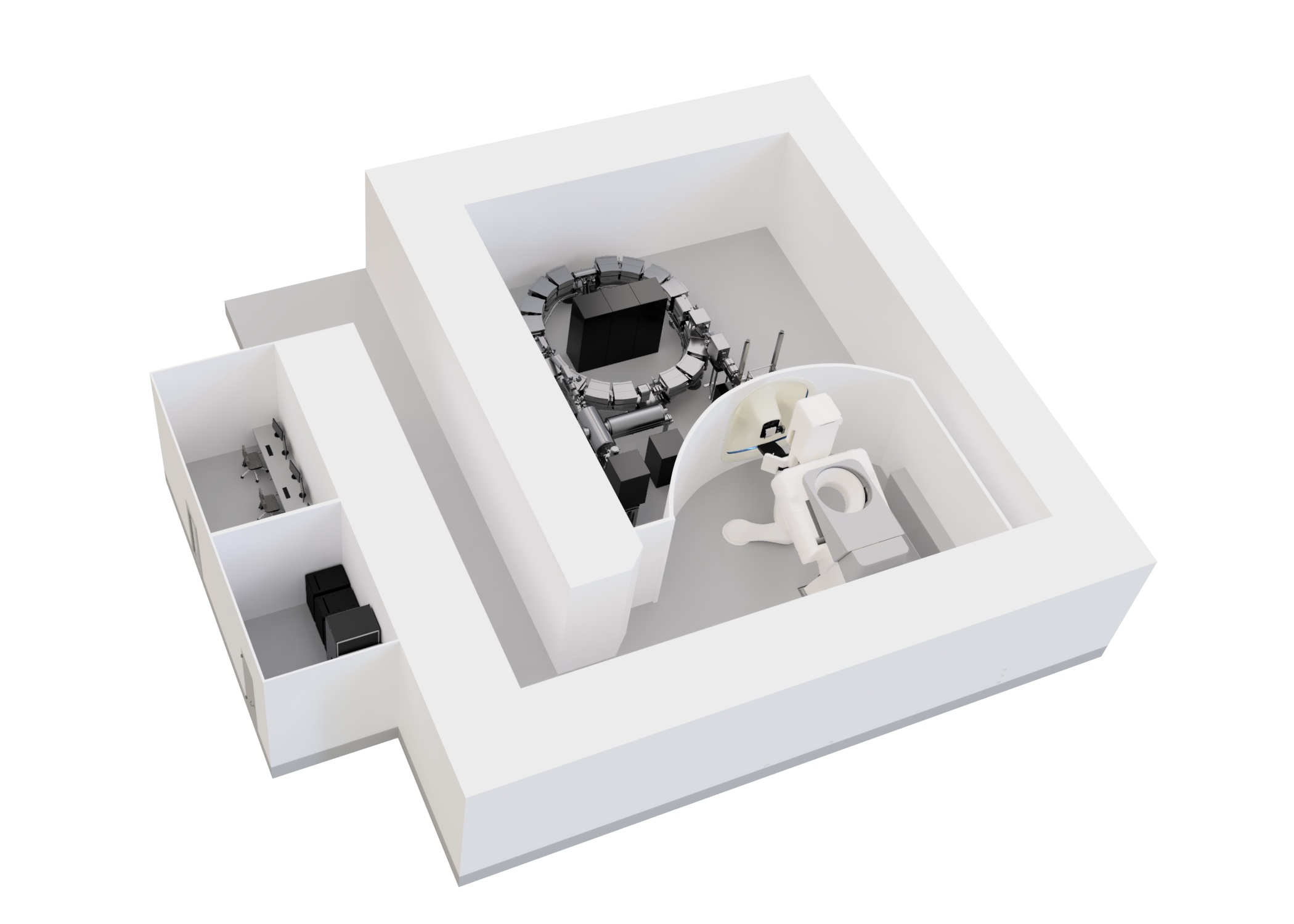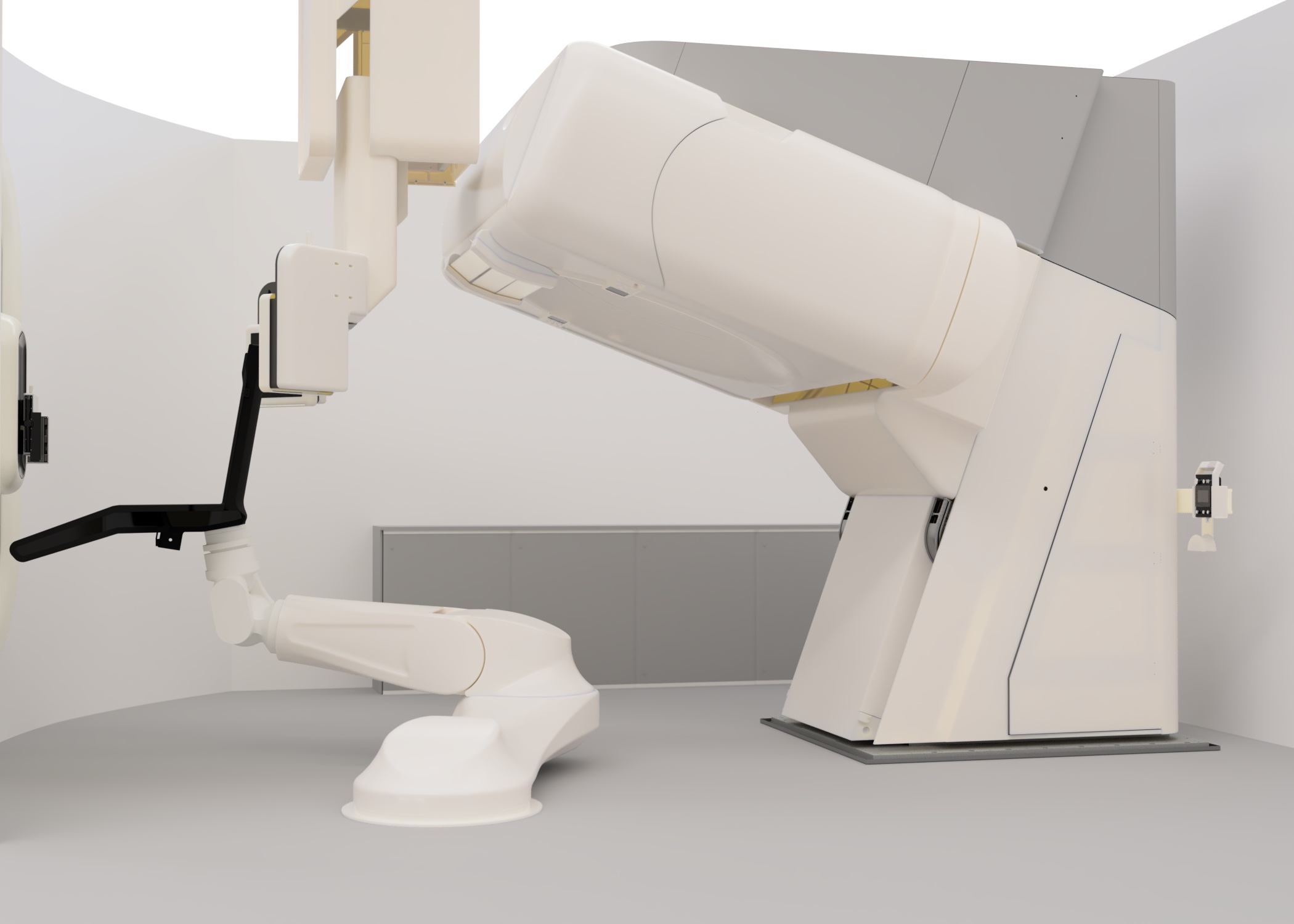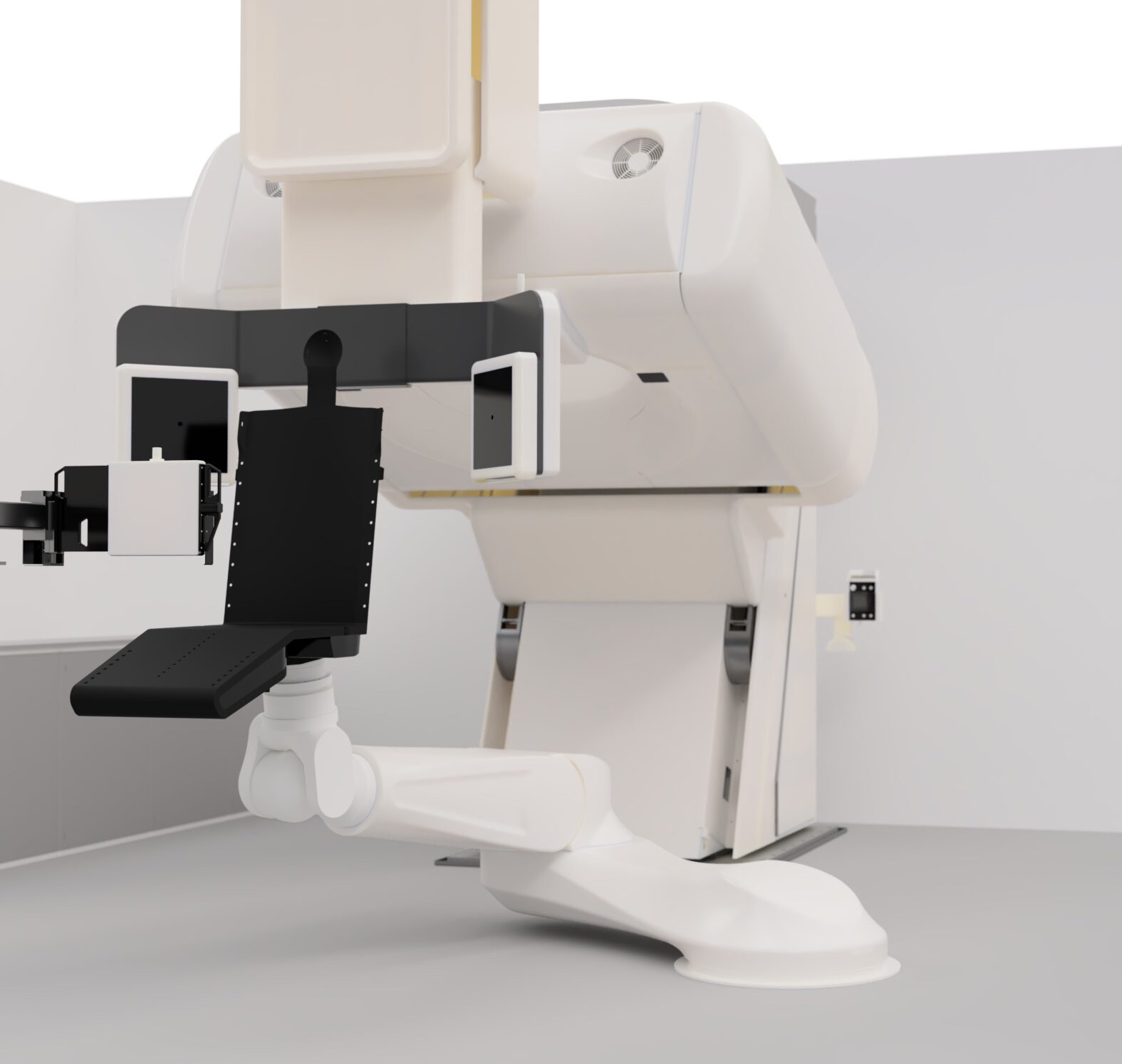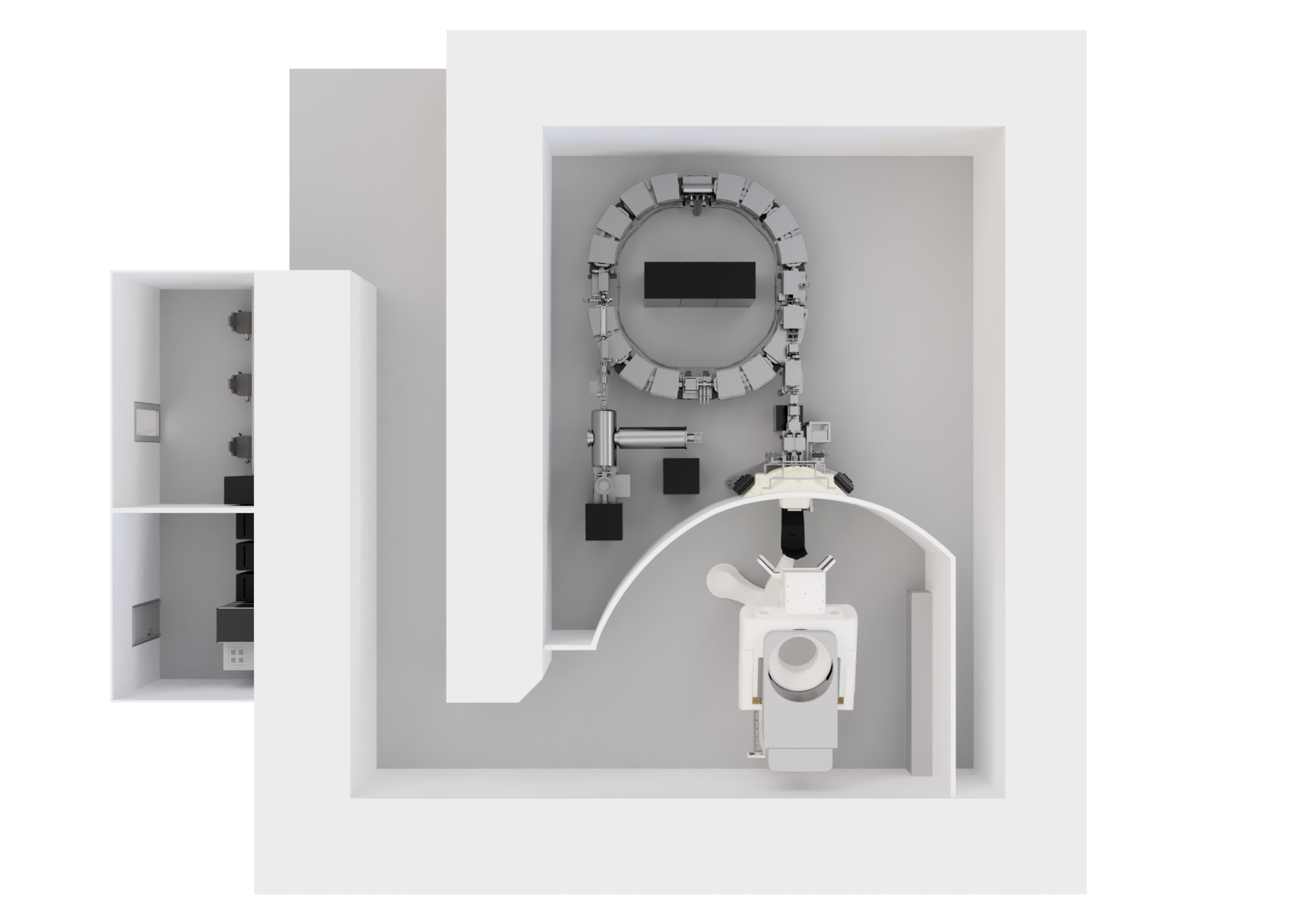Proton Therapy in Linac Vaults Enabled
Setting up the most compact FDA-Cleared Proton Therapy Services in existing departments maximizes patient access to the benefits of this life saving technology
Proton Therapy in Linac Vaults Enabled
Setting up the most compact FDA-Cleared Proton Therapy Services in existing departments maximizes patient access to the benefits of this life saving technology
1 Compact Equipment and Construction

The P-Cure system is the only gantry-less proton therapy system that can treat both seated and supine patients in Linac-like vaults.
The P-Cure system is designed for:
- A single-floor vault installation
- A single year for system delivery
- A single year for operating break even
- A single solution to treat seated and supine patients
Construction of a brand new vault to host the P-Cure system takes up to 6 months using standard construction methodology or using modular concrete solutions available on the market. Depending on the density of the chosen shielding material, the wall thickness ranges from 3 to 6 feet.
Whether developing a one-room center, a one-room expandable center, or a multi-room center, no other proton therapy system can match the advantages and the lower cost of a center that incorporates the P-Cure solution.
P-Cure is unique in its’ ability to offer existing oncology centers with an available Linac room the option to expand their treatment options to include proton therapy without the need to build a separate proton center.
2 Synchrotron-Accelerated Gated IMPT

The proton beam is accelerated using a compact synchrotron, the most advanced type of particle accelerator, designed to produce the requested beam energies safely with minimum electricity consumption. The synchrotron can be delivered to existing buildings via a freight elevator and once installed requires minimum shielding.
Once the proton is accelerated, the beam passes through the scanning magnets that bend the beam in 3D covering the entire treatment volume distributing the dose voxel by voxel. By varying the beam intensity or the speed of the scan, or both, the dose is painted non-uniformly on a field-by-field basis to yield an overall uniform target dose. The scanning technique allows clinicians to tailor treatments to improve dose conformity, reduce integral dose, or both.
We are proud to offer the FDA-cleared beam delivery with the largest treatment field available on the market.
3 Robotic Patient Positioning in Seated and Supine Positions

P-Cure system is the only compact system that treats patients in both seated and supine positions. This unique versatility offers advantages to the patient physiology, optimal treatment plan delivery and patient comfort.
Adult and child patients are immobilized in their appropriate treatment position using either our unique immobilization devises or off-the-shelf patient supports and standard immobilization aids, such as commercially available thermoplastic masks, vacuum cushions, and others.
The patient support is attached to a robotic arm that senses patient’s weight for optimal positioning in seated and supine orientations. The robotic arm is a 6 degree of freedom assembly that is fully integrated with image guided and treatment delivery subsystems.
The patient positioning is used in seated simulation and seated and supine image guided treatment positioning workflows. The simulation of patients in supine position is carried out in standard CT simulation setup outside the treatment room.
4 Adaptive Therapy-Driven Diagnostic In-Room 4D CT

The FDA-cleared in-room diagnostic quality 85 cm bore 4D CT scans patients in the seated position and is an integrated part of the most compact 360o gantry-less adaptive proton therapy system.
The CT is integrated in simulation, image-guided positioning, and treatment adaptation workflows, ensuring the treatment plan is always updated and the proton beam is delivered to the patient with maximum precision.
The acquired images are used for automatic 3D/3D image registration with a simulation CT dataset or automatic 2D/3D registration with orthogonal x-ray images acquired for per-field position verification.
5 Motion Management

The orthogonal x-ray system for imaging patients at isocenter in supine and seated positions is also an integrated subsystem of P-Cure’s most compact FDA-cleared proton therapy solution. The acquired images are used for automatic 2D/2D registration or 2D/3D registration with CT scans acquired during positioning or simulation.
The computed positioning errors are corrected by the robotic positioning device achieving the prescribed level of precision.
The system is designed for its use in combination with other motion management devices, such as spirometry and surface tracking systems to enable execution of gated and deep inspiration breath hold treatment protocols.
6 Solution Control and Operation

Our full proton therapy system is operated from a control room, which is located next to the treatment vault, close to its entrance.
The control room is equipped with 3 workstations, i.e. a CT workstation, an accelerator workstation, and a treatment session management workstation. Additional control devices are installed in the control room to enable automatic and manual control over moving subsystems, such as robotic patient positioning device, in room CT and orthogonal x-ray system detectors.
During the treatment day, the system is operated by radiation therapy technicians. Prior to treatments, technicians have to perform daily QA. At the end of the day the system is switched off till the next morning with no requirement for maintenance during the night.
Thank you for your request
Our representative will get back
to you to schedule a Demo

Request a Demo
Fill out your details below and our representative will get back to you to schedule a Demo
